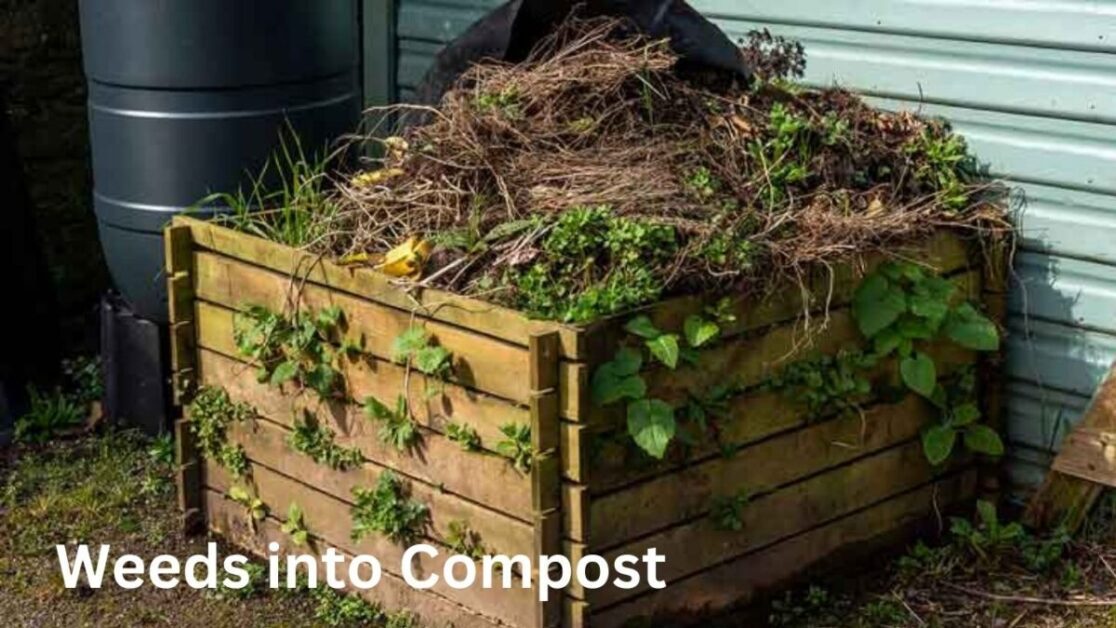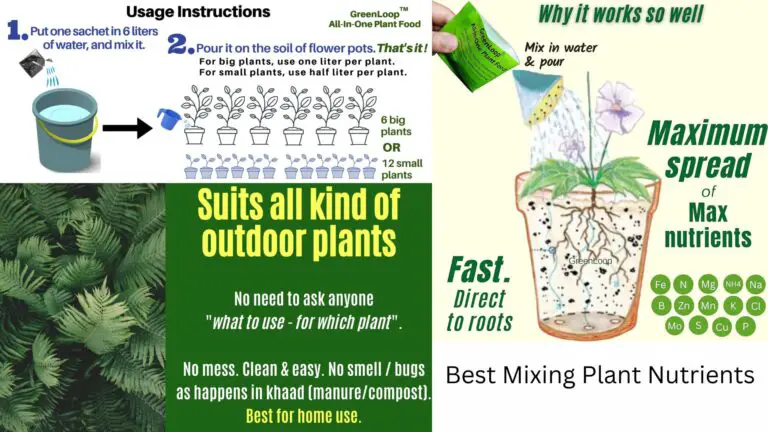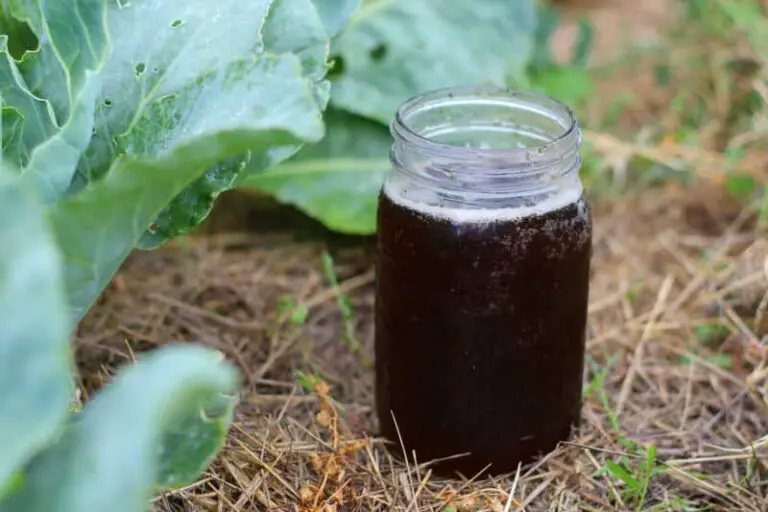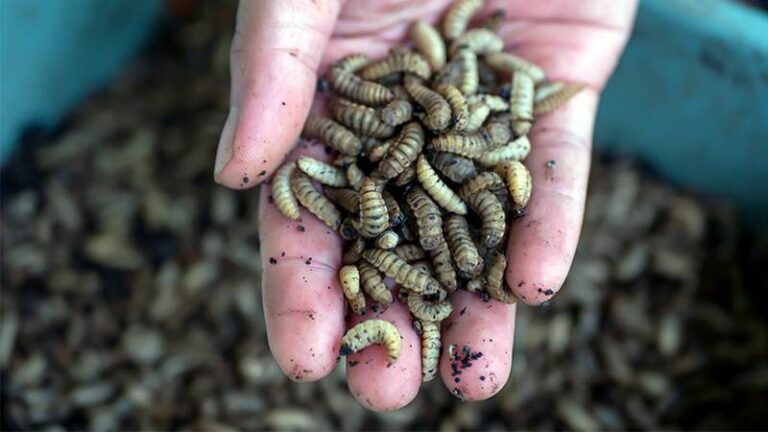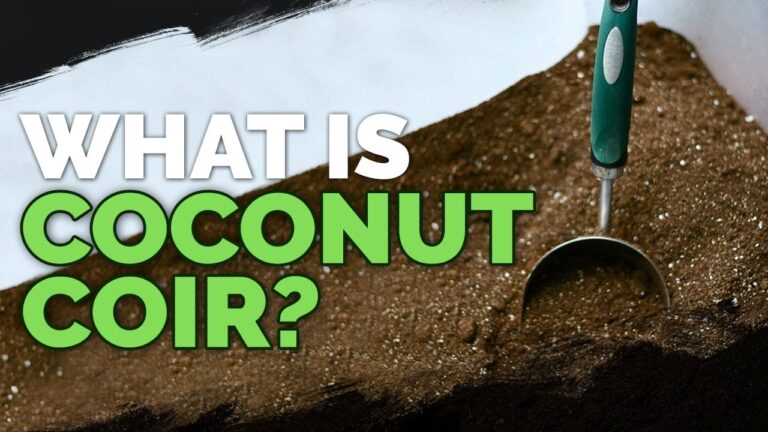How to Turn Weeds into Compost: 5 Easy Methods
Table of Contents: Weeds into Compost
Layering Weeds with Other Organic Materials: Weeds into Compost
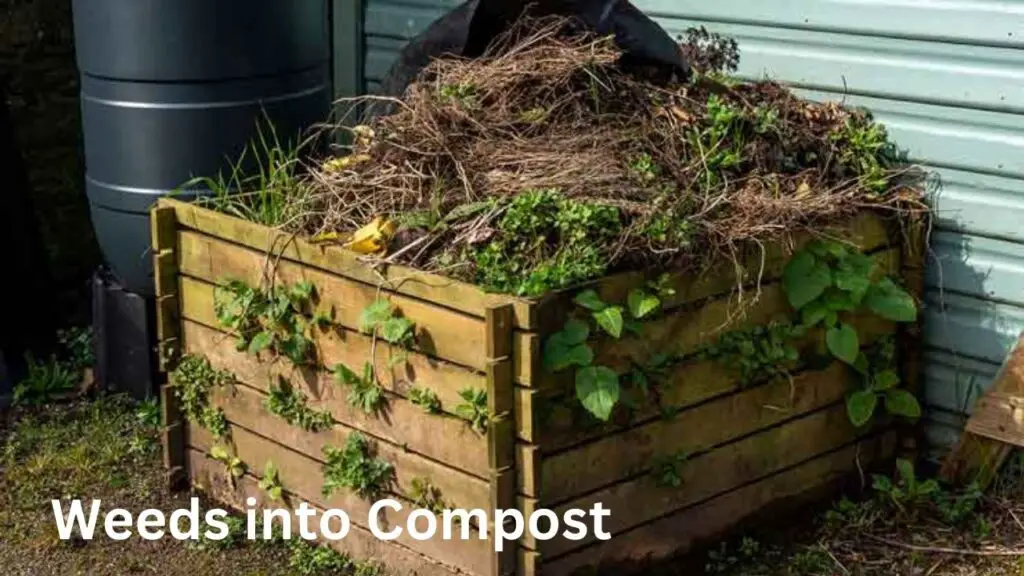
Layering weeds with other organic materials is a practical and effective method to manage weed growth while enriching the soil. By layering weeds with other organic materials, such as grass clippings, leaves, and vegetable scraps, you can create a compost pile that decomposes over time and transforms into nutrient-rich humus.
The process of layering weeds with other organic materials begins by collecting a mixture of green and brown materials. Green materials, like fresh weeds, provide nitrogen, while brown materials, such as dried leaves, offer carbon. Alternating layers of these materials helps create the ideal balance of nutrients and aids in the decomposition process.
As the layers decompose, the heat generated by the microbial activity kills weed seeds, preventing them from germinatin
g and sprouting. Additionally, the decomposing weeds release nutrients into the soil, improving its fertility. This method not only reduces weed growth but also turns a common gardening nuisance into a valuable resource for improving soil health. By layering weeds with other organic materials, gardeners can effectively manage weed growth while enriching their garden soil in an environmentally friendly manner.
Weeds into Compost: Turning the Compost Pile
Turning the compost pile is a crucial step in maintaining an effective composting system. Regularly turning the pile helps to aerate it, allowing oxygen to reach the microorganisms that break down organic materials. This promotes the decomposition process and helps to create a balanced and nutrient-rich compost.
When turning the compost pile, it is important to do it properly to ensure optimal results. Start by using a pitchfork or shovel to carefully lift and turn the organic matter from the outside of the pile towards the center. This helps to mix the materials and expose them to fresh oxygen. It is recommended to turn the pile every 1-2 weeks, or when the internal temperature drops below 100°F (38°C).
Remember to monitor the moisture levels of the compost pile while turning it. Ideally, the moisture content should be similar to a wrung-out sponge, as excessive moisture can lead to anaerobic conditions and unpleasant odors. On the other hand, if the pile is too dry, the decomposition process may slow down. To maintain proper moisture, you can add water as needed or cover the pile during heavy rainfall.
By regularly turning the compost pile, you are actively promoting the breakdown of organic materials and creating a nutrient-rich compost that is beneficial for your plants and gardens. So don’t forget this essential step in your composting journey.
(Word count: 256)
Weeds into Compost: Method 2 – Sheet Composting
Sheet composting, also known as lasagna gardening, is a simple and effective method for recycling organic materials and suppressing weeds. This method involves layering different types of organic materials directly on top of the soil, creating a thick mulch that decomposes over time. The decomposition process not only enriches the soil but also promotes the growth of beneficial organisms.
To start sheet composting, begin with a layer of nitrogen-rich materials such as grass clippings or fresh kitchen scraps. This provides a source of nutrients for the soil and encourages decomposition. Next, add a layer of carbon-rich materials like dry leaves, straw, or shredded newspaper. This helps to balance the nitrogen content and allows for better aeration of the compost pile. Repeat these layers until reaching the desired thickness, typically around 6-8 inches.
Sheet composting is particularly beneficial for weed control as it smothers unwanted plants. By layering organic materials, you create a barrier that prevents sunlight from reaching the weed seeds, inhibiting their germination and growth. Additionally, the decomposition process generates heat, which further suppresses weed growth. This method is not only effective but also sustainable, as it reduces the need for chemical herbicides and minimizes waste by utilizing organic materials that would otherwise be discarded.
In the next section, we will explore another method of composting weeds: composting in containers. Let’s delve into how choosing the right container and managing moisture and airflow can make this method a practical solution for utilizing the nutrients present in weeds.
• Sheet composting, also known as lasagna gardening, is a simple and effective method for recycling organic materials and suppressing weeds.
• Layer different types of organic materials directly on top of the soil to create a thick mulch that decomposes over time.
• Start with a layer of nitrogen-rich materials like grass clippings or fresh kitchen scraps to provide nutrients and encourage decomposition.
• Add a layer of carbon-rich materials such as dry leaves, straw, or shredded newspaper to balance nitrogen content and improve aeration.
• Repeat these layers until reaching the desired thickness (6-8 inches).
• Sheet composting effectively suppresses weed growth by smothering unwanted plants and preventing sunlight from reaching weed seeds.
• The decomposition process generates heat, further inhibiting weed germination and growth.
• This method reduces the need for chemical herbicides and minimizes waste by utilizing organic materials that would otherwise be discarded.
Heading 3: Smothering Weeds with Organic Materials
Smothering weeds with organic materials is an effective and environmentally friendly method to control weed growth in your garden. By using organic materials as a natural mulch, you can prevent weeds from germinating and thriving, while also improving the overall health of your soil.
One popular organic material for smothering weeds is straw or hay. These materials can be spread evenly over the soil surface around your plants, forming a layer that blocks sunlight and interrupts weed growth. Additionally, straw and hay break down over time, adding organic matter to the soil and improving soil structure. Another option is using organic mulch made from materials such as wood chips or shredded leaves. These mulches not only smother weeds but also help retain soil moisture, control temperature fluctuations, and enhance the aesthetics of your garden.
When using organic materials to smother weeds, it’s important to apply them properly. First, clear the area of any existing weeds or vegetation. Then, spread a layer of organic material about 2-3 inches thick, being careful not to pile it up against the stems of your plants. This will help prevent rot and allow airflow to the plant roots. As the organic material decomposes, you may need to periodically add more to maintain an effective weed barrier. Overall, smothering weeds with organic materials is an efficient and sustainable method to keep your garden weed-free while nourishing your soil.
Weeds into Compost: Allowing Weeds to Decompose in Place
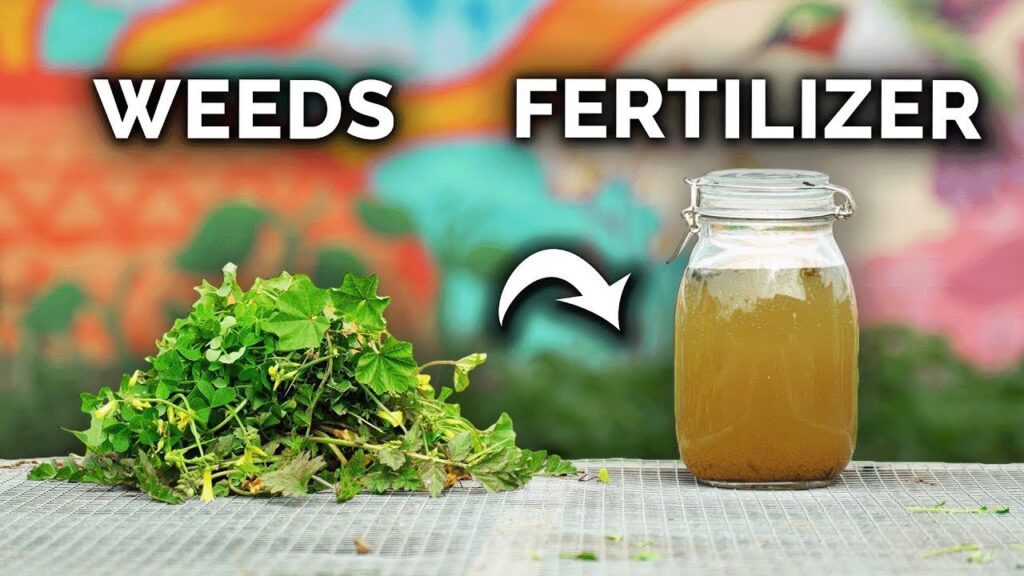
Allowing weeds to decompose in place is a natural and efficient way to manage them in your garden. Instead of uprooting and removing the weeds, you can let them break down right where they are, returning valuable nutrients back to the soil. This method works particularly well for small weeds that haven’t gone to seed yet.
When weeds decompose in place, they act as a green manure, enriching the soil with organic matter and essential nutrients. As the weeds break down, they release these nutrients, such as nitrogen, phosphorus, and potassium, which are crucial for plant growth. This not only improves the overall fertility of the soil but also promotes healthier and more robust plant growth.
To allow weeds to decompose in place, it’s important to cut or trim them down to speed up the decomposition process. This will increase the surface area of the weeds and expose them to organisms like bacteria and fungi that break down organic matter. By leaving the weed residue on the soil surface, you can also create a protective layer that helps retain moisture, prevent erosion, and suppress the growth of new weeds.
Overall, allowing weeds to decompose in place is a sustainable and low-maintenance approach to weed management. It not only saves you time and effort but also improves the health and fertility of your garden soil naturally. So the next time you encounter weeds, consider harnessing their natural decomposition power and turning them into a valuable resource for your plants.
Weeds into Compost: Method 3 – Composting Weeds in Containers
Composting weeds in containers is an effective method for managing and utilizing these garden nuisances. By using containers, gardeners have better control over the composting process and can prevent weeds from spreading seeds or taking root in unwanted areas.
When choosing a container for composting weeds, it is important to consider factors such as size, material, and ventilation. Opt for a container that is large enough to accommodate the volume of weeds you have, as well as allow for proper airflow and moisture retention. Plastic bins or wooden crates with drilled holes for ventilation are popular choices.
To start composting weeds in a container, begin by layering the weeds with other organic materials such as grass clippings, kitchen scraps, or shredded leaves. This will help create a balanced and nutrient-rich compost pile. It is crucial to maintain the right moisture levels and turn the compost regularly to ensure proper decomposition. Within a few months, the weeds will break down into a dark, crumbly compost that can be used to enrich garden soil.
Container composting offers a convenient and manageable way to repurpose and transform weeds into valuable organic matter. It allows gardeners to control the composting process, minimize weed spread, and obtain nutrient-rich compost for their gardens. Next, we will explore the benefits of vermicomposting weeds as another effective method for weed management and soil enrichment.
Weeds into Compost: Choosing the Right Container for Composting Weeds
When it comes to composting weeds, choosing the right container can make a significant difference in the success of your composting efforts. The container you select should provide the optimal conditions for decomposition and allow for easy management of the weeds.
One option for composting weeds is to use a traditional compost bin or pile. These containers provide ample space for weeds to decompose, and they allow for the mixing and turning of the materials to promote airflow and accelerate the composting process. It’s important to choose a bin or pile that is large enough to accommodate your weeds, yet small enough to manage effectively. Additionally, consider the material of the container – a sturdy plastic or metal bin will withstand the decomposition process and last for many years.
Managing Moisture and Airflow in Container Composting Weeds into Compost
Managing moisture and airflow is crucial for successful container composting of weeds. Proper moisture levels are essential for the decomposition process and to create the ideal environment for beneficial microbes. The composting material should feel moist, like a wrung-out sponge, but not overly wet or soggy. If the compost is too dry, decomposition will slow down, and if it’s too wet, it can lead to the growth of harmful bacteria or fungi.
To manage moisture, monitor the compost regularly and adjust as needed. If it’s too dry, sprinkle some water onto the compost and mix it in. Conversely, if it’s too wet, add dry materials like shredded leaves or straw to absorb the excess moisture. It’s also important to provide proper airflow to prevent anaerobic conditions, which can produce foul odors and slow down the composting process.
Ensure that your container composting system allows for adequate airflow. This can be achieved by turning the compost regularly to introduce oxygen or using containers with ventilation holes or aeration systems. By managing moisture and airflow effectively, you can create an optimal environment for composting weeds in containers, resulting in nutrient-rich compost for your garden.
Method 4 – Vermicomposting Weeds into Compost
Vermicomposting, also known as worm composting, is a highly efficient method of composting that can effectively transform weeds into nutrient-rich organic matter. This technique harnesses the power of earthworms to break down weeds and convert them into a valuable resource for your garden.
To begin vermicomposting weeds, you will need a worm bin specifically designed for this purpose. A bin with multiple layers and adequate ventilation is essential to create a favorable environment for the worms. It is important to choose the right container size based on your composting needs and the amount of weeds you have available. Additionally, ensure that the container has a tight-fitting lid to prevent unwanted pests and maintain the optimal moisture level.
Feeding the weeds to the worms is a straightforward process. Simply layer the weeds in the worm bin, ensuring that they are evenly distributed. It is advisable to chop or shred the weeds into smaller pieces to facilitate faster decomposition. Over time, the worms will consume the weeds, leaving behind their castings, also known as vermicompost, which is a nutrient-rich soil amendment. It is important to avoid adding weeds that have gone to seed, as the seeds may survive the composting process and result in weed growth in your garden.
Incorporating vermicomposting as a method to compost weeds not only reduces waste but also provides a valuable source of organic matter for your garden. Stay tuned as we explore other composting methods and techniques to make the most of your garden waste and create a thriving ecosystem in your backyard.
Weeds into Compost: Creating a Worm Bin for Weeds
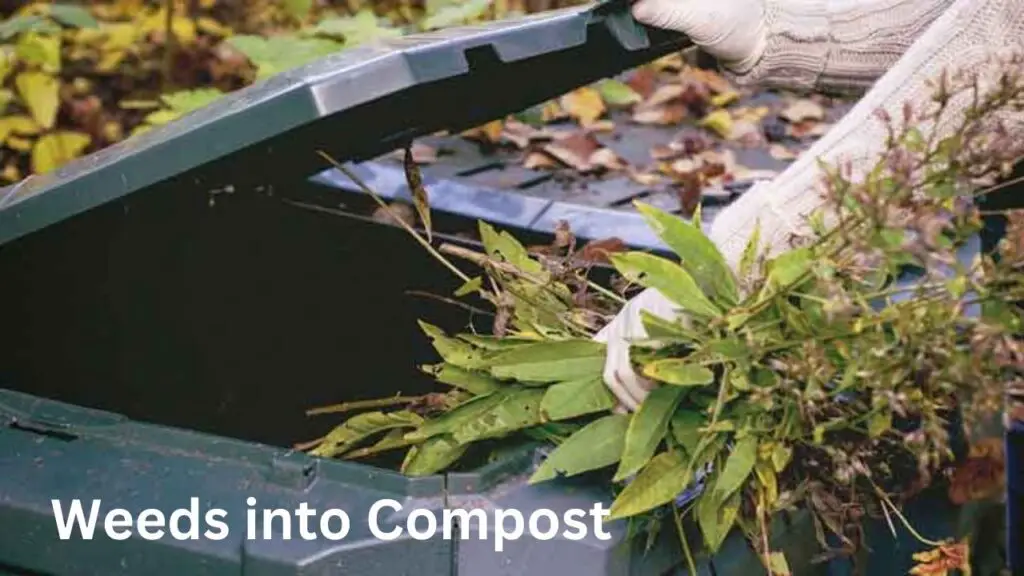
When it comes to creating a worm bin for weeds, there are a few key considerations to keep in mind. First and foremost, choosing the right container is essential. Opt for a container that is sturdy, well-ventilated, and provides enough space for the worms to thrive.
Next, it’s important to create a suitable environment within the worm bin. This means adding bedding material such as shredded newspaper or cardboard to provide a comfortable habitat for the worms. It’s also crucial to maintain the right moisture level by regularly spraying the bedding with water to keep it damp but not soggy.
Feeding the worms with weeds is the next step in the process. However, it’s essential to ensure that the weeds are free from seeds to prevent any unwanted growth. Chop or shred the weeds into smaller pieces and mix them into the bedding material. This will provide the worms with a nutritious food source to feed on while helping to break down the weeds into nutrient-rich compost.
By following these steps, you can create an effective worm bin for weeds and harness the power of worms to transform these garden nuisances into valuable compost for your plants. Stay tuned for more tips and techniques to effectively manage weeds in your garden.
Weeds into Compost: Feeding Weeds to the Worms
Feeding weeds to worms can be a beneficial and sustainable way to manage unwanted plants in your garden. Worms, specifically red wigglers, are known for their ability to break down organic matter, including weeds, into nutrient-rich compost. This natural process helps convert weeds into valuable soil amendments that can be used to enhance the health and fertility of your garden beds.
When feeding weeds to worms, it is important to avoid introducing weeds that have gone to seed. This can prevent weed seeds from germinating and spreading throughout your garden when you eventually use the compost. Additionally, it is recommended to chop up or shred the weeds into smaller pieces before adding them to the worm bin. This increases the surface area for the worms to consume and speeds up the decomposition process. By providing a balanced diet of weeds and other organic materials, you can ensure that your worms have a healthy and diverse diet, resulting in nutrient-rich vermicompost for your garden.
Here’s a basic table with information about Weeds into Compost:
| Aspect | Details |
|---|---|
| Types of Weeds | Broadleaf weeds, grasses, and other non-diseased varieties |
| Collection | Collect weeds before they produce seeds to prevent spreading |
| Avoidance | Avoid weeds with persistent seeds or invasive roots |
| Preparation | Chop or shred larger weeds for faster decomposition |
| Layering | Mix with other organic materials in compost layers |
| Carbon-Nitrogen Ratio | Balance with high-carbon materials (e.g., straw, leaves) |
| Moisture | Maintain optimal moisture levels for decomposition |
| Temperature | Regularly turn the compost to aid in the breakdown process |
| Time to Decompose | Varies based on composting conditions, typically 2-6 months |
| Weeds with Seeds | If composting weeds with seeds, ensure compost reaches high temperatures to kill seeds |
| Compost Quality | Well-composted weeds can contribute rich, organic matter to the soil |
| Avoid Diseased Weeds | Do not compost weeds with diseases to prevent spreading |
| Potential Issues | Weeds with tough roots may require more time to break down; monitor for proper decomposition |
| Compost Use | Use the finished compost to enrich garden soil |
| Benefits | Recycling organic matter, reducing weed regrowth, and improving soil structure |
| Caution | Avoid composting weeds treated with herbicides or pesticides |
This table outlines the key considerations and steps involved in composting weeds. Remember to customize the process based on your specific composting setup and the types of weeds you encounter.
Method 5 – Using Weeds into Compost as Mulch
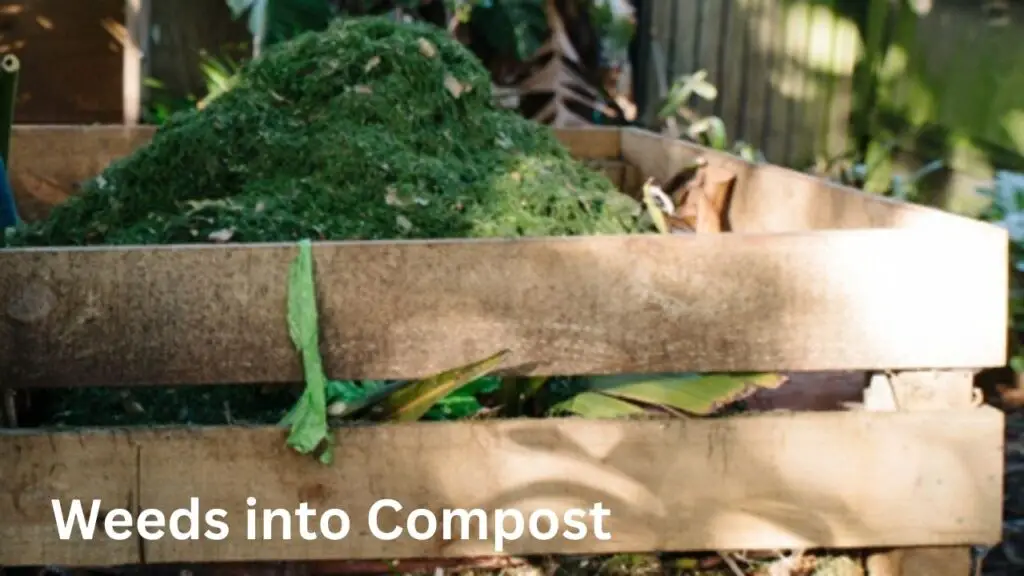
Using weeds as mulch can be a sustainable and cost-effective method to suppress weed growth and enhance the health of your garden. By layering weeds on the soil surface, you create a natural barrier that prevents sunlight from reaching weed seeds, inhibiting their germination. Additionally, as the weeds break down, they contribute nutrients to the soil, promoting plant growth. This method also helps with moisture retention, reducing the need for frequent watering and conserving water resources.
When applying weeds as mulch, it’s important to follow a few guidelines. Firstly, ensure that the weeds have not gone to seed to avoid inadvertently spreading them further in your garden. Secondly, consider chopping or shredding the weeds before applying them to the soil. This will not only speed up the decomposition process but also create a more uniform and aesthetically pleasing appearance. Lastly, remember to add a layer of organic materials, such as straw or wood chips, over the weed mulch to prevent it from blowing away and to provide further weed suppression.
With proper application and regular maintenance, using weeds as mulch can be an effective strategy for weed control while improving the overall health of your garden. However, it is essential to monitor the area regularly and remove any weeds that manage to grow through the mulch layer. By combining this method with other weed control techniques, you can create a healthy and flourishing garden that minimizes the reliance on chemical herbicides.
Weeds into Compost: Applying Weeds as Mulch in the Garden
Applying weeds as mulch in the garden is an effective and eco-friendly way to control weed growth and nourish your plants. Mulching with weeds not only helps to suppress weeds but also provides additional organic matter to the soil, improving its fertility and structure.
When using weeds as mulch, it is important to ensure that the weeds are free from pests, diseases, and weed seeds that could potentially spread in your garden. Not all weeds are suitable for mulching, so it is necessary to identify the weeds that can be safely used as mulch. Avoid using weeds that have gone to seed or ones that are invasive in your area.
To apply weeds as mulch, simply gather the weed material and spread it evenly around your plants, ensuring that the mulch is not too thick to prevent water from reaching the roots. The weed mulch will smother any existing weeds, preventing their growth by blocking out sunlight. Additionally, as the weeds break down, they release nutrients back into the soil, enriching it and providing nourishment to your plants.
By utilizing the weeds that naturally grow in your garden as mulch, you can reduce the need for synthetic herbicides and minimize the time and effort spent on weeding. Not only does this approach contribute to a healthier and more sustainable gardening practice, but it also helps to create a nutrient-rich environment for your plants to thrive. Consider incorporating this method into your gardening routine to reap its many benefits.
Weeds into Compost: Method 2 – Sheet Composting
Sheet composting, also known as lasagna gardening, is a method that involves layering organic materials directly on the soil to create a nutrient-rich environment for plants. This technique is particularly effective for managing weeds in a natural and sustainable way. To start, lay down a thick layer of cardboard or newspaper to smother existing weeds and prevent them from growing through the compost. Next, add alternating layers of green materials, such as kitchen scraps, grass clippings, and fresh weeds, and brown materials, such as fallen leaves, straw, and shredded paper. Keep the layers moist but not soggy, as the decomposition process requires the right balance of moisture and air. Over time, the organic materials will break down, and the weeds will decompose, enriching the soil and providing a healthy environment for your plants.
Method 3 – Composting Weeds in Containers
If you have limited space or want to keep your composting contained, composting weeds in containers can be a convenient and efficient method. Choose a container that is large enough to accommodate your weeds but small enough to fit in your gardening space. It’s important to ensure proper airflow and moisture management in the container. Drilling holes in the container for ventilation and drainage can help promote decomposition and prevent the compost from becoming too wet. Layer the weeds with other organic materials, such as kitchen scraps, lawn clippings, or shredded paper, to create a balanced mixture. Remember to monitor moisture levels and occasionally give the compost a turn to encourage even decomposition. With time, your weeds will transform into nutrient-rich compost that can be used to nourish your garden plants.
Can I use Weeds into Compost as mulch in my garden?
Yes, using weeds as mulch is a great way to suppress weed growth and provide organic matter to your soil.
What is vermicomposting Weeds into Compost?
Vermicomposting is a composting method that uses worms to break down organic materials, including weeds, into nutrient-rich fertilizer.
How do I create a worm bin for Weeds into Compost?
To create a worm bin, you will need a container with drainage holes, bedding materials such as shredded newspaper or cardboard, and a healthy population of composting worms.
Can I Weeds into Compost in containers?
Yes, you can compost weeds in containers using various methods such as layering them with other organic materials, turning the compost pile, or smothering them with organic materials.
How do I manage moisture and airflow in container composting?
It is important to maintain the right moisture level by regularly checking the moisture content and adjusting it if necessary. Additionally, providing proper airflow by turning the compost regularly or using aeration tools can help facilitate the composting process.
Why is sheet composting a good method for composting weeds?
Sheet composting allows the weeds to decompose in place, providing a natural way to control weed growth while simultaneously enriching the soil.
Can I Weeds into Compost along with other organic materials in the same pile?
Yes, layering weeds with other organic materials in a compost pile can help speed up the decomposition process and create nutrient-rich compost.
How do I choose the right container for Weeds into Compost?
When composting weeds in containers, choose a container that is large enough to hold the weeds but also provides proper drainage and airflow.
What is the benefit of composting weeds through the process of decomposition?
Allowing weeds to decompose in place or composting them helps break down the weed seeds, preventing them from sprouting and reinfesting your garden.
Can I feed weeds to worms in a vermicomposting system?
Yes, worms can consume and break down weeds, turning them into nutrient-rich worm castings that can be used as fertilizer.

